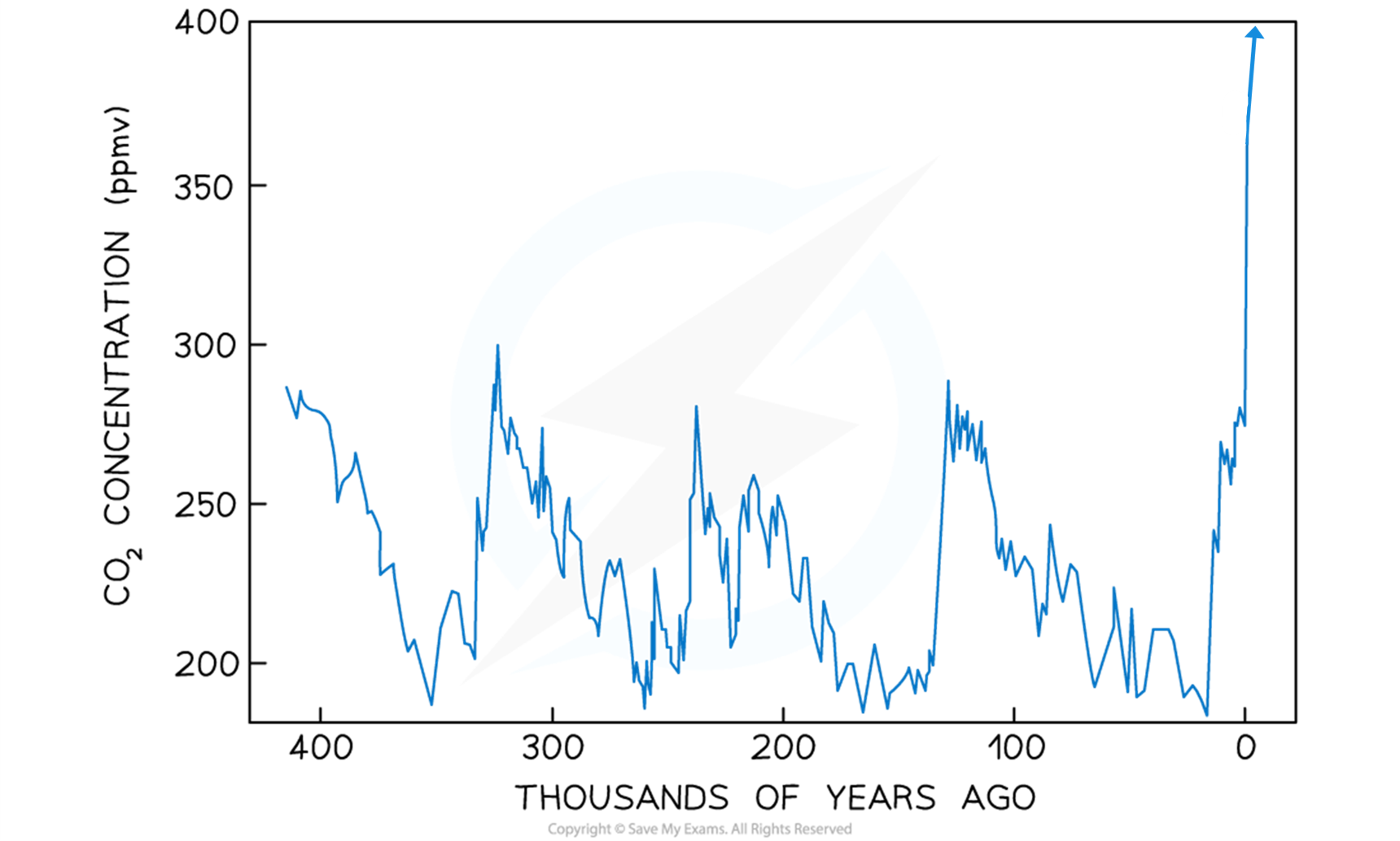Impact of Fuel Extraction & Burning
Extracting hydrocarbons
- Hydrocarbons lock up carbon within the lithosphere over long periods of time
- Carbon diffuses from the atmosphere allowing phytoplankton and animal life to use the carbonate ions to form shells and skeletons
- Upon death, they sink to the ocean floor where (over a very long time) they are compressed into oil, coal and gas
- People have extracted hydrocarbons to produce energy and heat for a long time
- But, the rate of extraction has increased over time which is moving lithospheric carbon stores to the atmosphere
- Extractive industries (such as Canada tar sands project) are responsible for half of the Earth's carbon emissions
- Since 1970, hydrocarbon extraction has risen from 6bn tonnes to 15bn tonnes, which is three times faster despite the population only doubling since then
- Furthermore, extraction processes are destroying the environment and biodiversity is lost, thereby reducing the availability of vegetation to photosynthesise the CO2 from the atmosphere
Burning hydrocarbons
- Burning fossil fuels affects the finely balanced climate
- Since the 1960s, global concentrations of CO2 have risen from 320 ppm to just over 418 ppm (2022)
- This is the highest recorded level ever
 Levels of carbon dioxide in the atmosphere remained fairly cyclical prior to the industrial revolution, when carbon dioxide levels have continued to increase, with no sign of dropping as in the past
Levels of carbon dioxide in the atmosphere remained fairly cyclical prior to the industrial revolution, when carbon dioxide levels have continued to increase, with no sign of dropping as in the past
- As CO2, methane and water vapour are released, they act as greenhouse gases and trap heat within the Earth’s atmosphere
- Anthropogenic activities are responsible for almost all of the increase in greenhouse gases in the atmosphere over the last 150 years

- 90% of global CO2 emissions come from burning fossil fuels and industry
- Emissions from coal (42%), oil (33%), gas (19%), cement (6%) and gas flaring (1%)
- Natural gas; often promoted as a cleaner energy source; accounts for a fifth of the world’s total carbon emissions
-
Countries such as China and the USA dominate CO2 emissions from these sources

